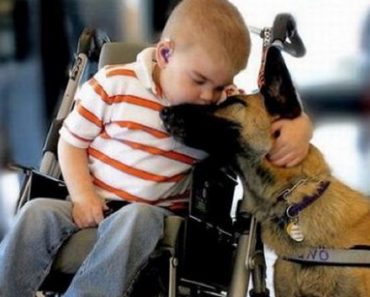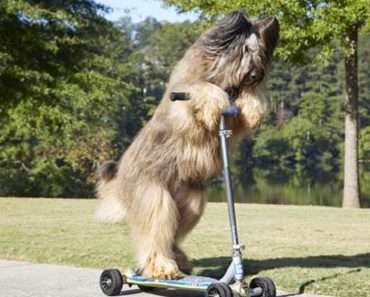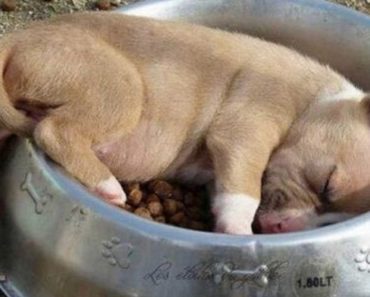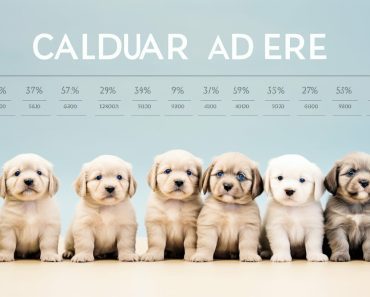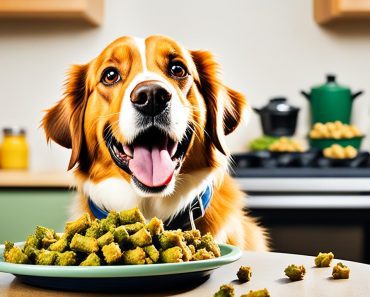As a devoted pet enthusiast and a proactive caretaker of our furry companions, I understand the importance of tackling obesity in dogs. It’s disheartening to see obese dogs struggle with health issues that are frequently avoidable. Much like humans, our canines can suffer from overweight dog problems, which not only hinder their quality of life but can also lead to a myriad of health issues. Addressing the burgeoning concern of morbidly obese dogs is more than just a cosmetic preference; it’s a vital component of obesity management for dogs.
Fortunately, there are effective strategies for dog obesity prevention. It’s my mission to share some practical dog weight loss tips and weight management for dogs techniques to nurture healthier lifestyles for our pets. With a bit of knowledge and commitment, we can succeed in preventing obesity in pets, ensuring our dogs have the happy, active lives they deserve.
Key Takeaways
- Understanding the health impacts of dog obesity is essential for effective prevention and management.
- Implement a balanced diet with the appropriate portion sizes for your dog’s needs.
- Regular exercise tailored to your dog’s breed and size can be a game-changer in weight control.
- Partner with your veterinarian to set achievable weight loss goals and to monitor progress.
- Accountability and consistency in your dog’s diet and exercise routine are key to success.
- Educate yourself about the signs of obesity and take proactive steps to keep your pet healthy.
Understanding the Basics of Canine Obesity
As a dedicated pet owner, I’m here to guide you through the ins and outs of canine obesity, a condition that transcends being a simple aesthetic concern. It’s vital to acknowledge that being overweight can have serious implications for a dog’s overall health, influencing everything from their daily comfort to their longevity.
What is Canine Obesity?
Canine obesity is defined as a dog carrying excess body fat that exceeds the body’s optimal weight by 20% or more. It’s not just a case of a few extra pounds; obesity is a clear indicator of health imbalance, representing a significant threat to a dog’s well-being.
The Pervasive Issue of Overweight Dogs
The problem of dogs being overweight is widespread and growing. Key factors such as calorie-laden diets and a sedentary lifestyle are culprits I often see leading to overweight problems in dogs. It’s up to us as responsible pet parents to recognize and rectify these habits.
Identifying the Risks: Health Problems Associated with Dog Obesity
The health risks of obesity in dogs are manifold. Carrying extra weight not only puts additional stress on their joints and organs but can also lead to serious health conditions such as diabetes and heart disease. Promoting canine weight loss, when handled correctly, is a journey that not only improves health but also enhances quality of life for our furry companions.
- Excess body fat leading to joint stress and pain
- Increased risk of metabolic and endocrine disorders
- Respiratory difficulties compromising a dog’s ability to exercise
- Reduced life expectancy and diminished quality of life
Common Causes of Obesity in Dogs
As a dedicated pet owner, I’ve witnessed firsthand how dog obesity can become a significant health issue for our furry companions. Canine obesity is not just about a few extra pounds; it’s a substantial concern that impacts the well-being of our pets. Outlining these causes is the first step in combating the issue of obese pets, and understanding is crucial to making positive changes. Let’s explore the main factors that contribute to this widespread problem.
- Modern Lifestyle: Many dogs today live a laid-back lifestyle, often echoing the sedentary routine of their human families. Gone are the days when dogs spent hours running outdoors; now, due to tight work schedules and urban living, opportunities for physical activity are greatly curtailed.
- Free-Choice Feeding: Leaving food available for pets to eat at their leisure is convenient but can lead to a caloric imbalance and weight gain.
- Lack of Portion Control: Many of us may not measure our dog’s food accurately, which can result in overfeeding without even realizing it. Consistent portion control is essential for maintaining a healthy weight.
Besides lifestyle choices, there are inherent risk factors in our pets that make them more susceptible to obesity:
- Genetic Predisposition: Certain breeds, notably Labradors and flat-coated retrievers, seem to have a genetic inclination towards carrying extra weight.
- Gender Disposition: Female dogs are often more likely to become overweight, especially after being spayed.
- Sedentary Behavior: Dogs that are less active, whether due to their living environment or owner’s habits are at a higher risk of becoming obese. A lethargic lifestyle can significantly contribute to the problem of obesity in pets.
- Medical Conditions: Endocrine disorders, such as hypothyroidism and diabetes, could also lead to unintentional weight gain in dogs. Moreover, certain medications including steroids and antiepileptics can have weight gain as a side effect.
Awareness of the various factors leading to dog obesity helps us to create better strategies to manage and prevent this growing problem among our canine friends. By recognizing these common causes, we can implement necessary changes to ensure our dogs live happy, healthy, and active lives.
Practical Weight Management Strategies for Your Pooch
As a dedicated dog owner, I acknowledge the challenge of preventing obesity and maintaining proper weight in our canine companions. It starts with a proactive approach that incorporates both diet and exercise, aimed at creating a sustainable lifestyle for our furry friends.
Obesity Prevention in Dogs: Starting on the Right Paw
I’m a firm believer that prevention is better than cure, especially when it comes to obesity in dogs. This belief has led me to choose foods that are appropriate for my dog’s specific nutritional needs, considering factors like life stage and overall health. It’s essential to ignore the well-meaning general feeding guidelines on pet food packaging and rather heed a veterinarian’s precise portion recommendations. Establishing set meal times and using interactive feeders engages my dog during mealtime, making it less likely for her to overeat.
Creating a Balanced Diet for Your Pet
A healthy diet for overweight dogs doesn’t just happen; it requires deliberate planning and knowledge. I monitor what my dog eats, ensuring that her meals are balanced and within the calorie range that supports her weight management goals. This might include incorporating lean proteins, whole grains, and plenty of fresh vegetables into her diet, alongside calculated portions to avoid overfeeding.
The Role of Regular Exercise in Canine Weight Control
Regular exercise is crucial for weight loss in dogs, and I make sure my dog gets plenty of it. Together, we enjoy various forms of physical activities that not only help her lose weight but also keep her mentally stimulated. A veterinarian-approved exercise plan that could include walks, swimming, or agility training is part of our routine. It’s important to stay conscious of her fitness level and any signs of discomfort, adjusting our activities accordingly. Regular check-ups help us track her progress and adapt as necessary to keep her at an optimum weight.
- Choosing a veterinarian-recommended nutrient-rich diet
- Monitoring portion sizes carefully
- Incorporating exercise aligned with my dog’s unique needs
- Routine health and fitness assessments
These steps, when taken consistently, can help ensure our dogs stay fit, avoid the complications of obesity, and lead happy, healthy lives. It’s a journey I’m committed to, for the wellbeing of my loyal companion.
The Truth About Canine Dieting: Transitioning to Healthier Eating Habits
As a pet owner deeply invested in improving the health of my furry companion, I’ve come to recognize the prevalence of obesity in animals and taken up the mantle of dog obesity prevention. Tackling canine obesity causes means reevaluating our pets’ dietary habits and committing to healthier standards. It’s more than just a diet; it’s a lifestyle change for your dog to combat the issue of dogs overweight and embrace a brighter, more active future.
To effectuate this change, I’ve learned that patience and a methodical approach are key. A sudden overhaul of diet can do more harm than good – it’s all about the art of subtlety:
- Begin by integrating new, healthier food options with the old diet, expanding over the course of a week.
- Simultaneously, start reducing overall caloric intake, keeping an eye out for the ideal meal sizes.
Customization is not just a buzzword in human diets; it’s equally imperative when feeding our dogs. Individual health issues demand tailored nutrition plans, sometimes even specialized therapeutic diets.
Maintaining diet consistency, even after achieving the target weight, ensures the ghost of obesity doesn’t haunt your pet again. The goal is to prevent rebound weight gain, which is a common pitfall in canine weight management.
Of course, I’m not alone in this journey. My veterinarian is the co-pilot, helping devise a comprehensive nutrition plan. Together, we’re steering towards a future where my dog doesn’t just live but thrives, free from the shackles of excessive weight.
So here’s to healthier eating habits, to the discipline it takes to implement them, and to the commitment of keeping our dogs in the best shape possible. The rewards – those bright eyes, that wagging tail, and an enduring companionship – are worth every bit of effort we put in to combat obesity in animals.
Interactive Play and Its Impact on Dog Weight Loss
When I explore the world of dog health, one topic that frequently captures my attention is the role of interactive play in achieving and maintaining a healthy weight for our canine companions. We understand how crucial it is for us to stay active to lead a healthy lifestyle, and the same goes for our pets. Incorporating dog exercise for weight loss into our furry friends’ routines can not only assist in managing their weight but also provide a fun and enriching experience for both the pet and the owner.
Encouraging Physical Activity Through Play
As someone who advocates for a healthy lifestyle, I often advise pet owners on obesity in dogs prevention tips. A game of fetch in the backyard, an agility course in the park, or a brisk walk around the neighborhood can make a significant difference in our dogs’ well-being. These activities provide an outlet for pent-up energy and apply the natural instincts of our pets, making the weight loss process enjoyable.
Using Toys and Puzzles to Combat Obesity in Pets
A key component on the road to a healthy diet for overweight dogs is not only what they eat but also how they eat. Puzzle feeders and interactive toys pose delightful challenges that mentally stimulate dogs and extend feeding times, making meals more of an engaging activity for a dog’s body and mind. This approach to feeding can help control caloric intake, aligning with a broader strategy for preventing obesity in pets.
- Interactive toys that require dogs to move or manipulate objects
- Food puzzles that make dogs work for their treats
- Activity trackers to monitor the amount and intensity of daily exercise
In my experience, maintaining our dogs’ health requires a consistent and engaging routine. I endorse any form of activity that contributes to this goal, and I encourage pet owners to explore various playful options to find what best suits their pets’ personalities and preferences.
Your Role in Fighting the Fat: Owner’s Responsibility for Dog Health
As a devoted pet parent, I recognize my pivotal role in preventing health issues associated with canine obesity. Whether it involves managing my overweight dog or taking steps to ensure my pup doesn’t become one of the many obese dogs facing serious health problems, the responsibility falls on my shoulders. Kenneling this issue doesn’t just mean feeding less; it’s about creating a wholesome lifestyle that includes both diet and exercise to combat potential overweight dogs health problems.
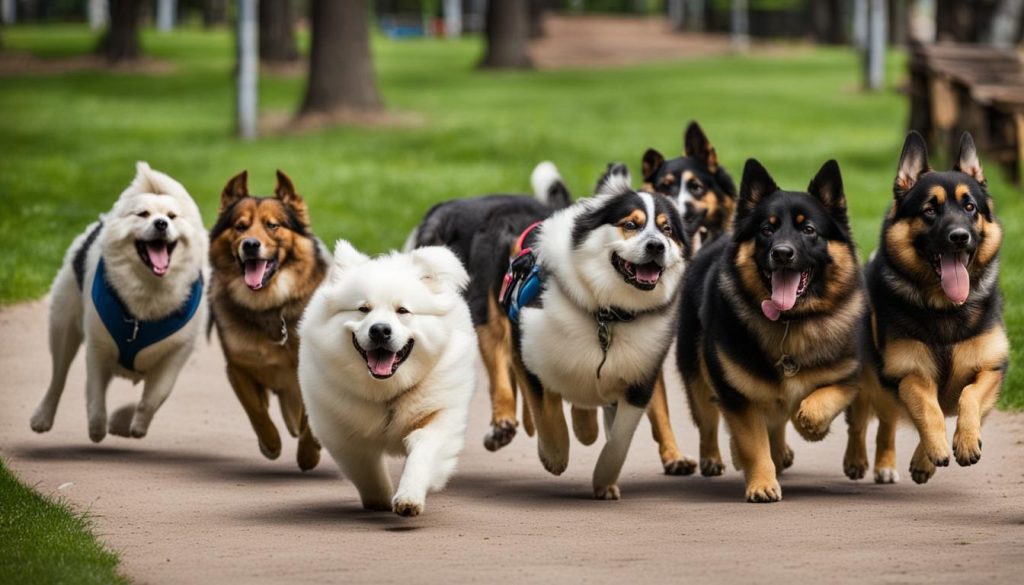
- Portion Control: Measuring my dog’s food meticulously prevents overfeeding.
- Treats in Moderation: Keeping treats rare ensures they’re a delight without contributing to weight gain.
- Healthy Routine: Regular feedings, coupled with ample play, enable a balanced lifestyle.
Confronting this issue often leads to the question, “can dogs die from being overweight?” Sadly, the answer is that obesity can indeed lead to life-threatening conditions. That’s why I am committed to providing my dog with nutritionally dense, high-quality food and enough activity to maintain a healthy weight.
- Regular Vet Check-ups: Routine vet visits ensure I’m on track with my dog’s health.
- Exercise: Tailored to my dog’s needs to prevent joint strain and build stamina.
- Interactive Feeding: Encouraging my dog to work for food taps into their natural instincts and keeps them engaged.
It’s clear that addressing the problem of overweight dogs is not a passive but an active endeavor. Together with my vet and a community of fellow pet lovers, I’m determined to ensure my pet lives a long, fulfilled, and healthy life. Just as in our own lives, preventing and managing weight is a holistic process, encompassing all facets of well-being for our beloved canine companions.
Conclusion
As I take a moment to reflect on the importance of managing obesity in our canine companions, I’m reminded of the real dangers it poses—from the numerous health risks of obesity in dogs to the sobering reality that obese pets can face shortened lifespans. Addressing obesity isn’t just a matter of aesthetics; it’s about preventing the multitude of related overweight dog problems and ensuring that we don’t overlook any symptoms or indicators of excess weight in our furry friends.
In my journey as a dog owner, I’ve learned that awareness and vigilance are key. Regular monitoring of diet and exercise, an understanding of my dog’s specific health requirements, and consistent veterinary check-ups form the backbone of successful weight management. It’s not about short-term fixes but rather the long-term commitment to their well-being. The question I often hear, “Can dogs die from being overweight?”, serves as a harsh reminder that the stakes are indeed high. My aim is to enable my dog to lead a healthier and more energetic life, free from the pain and limitations caused by obesity.
It takes a proactive approach to counteract the trend toward obesity in our pets, but the rewards of such dedication are invaluable. The pursuit of a healthy weight for my dog equates to a balance of proper nutrition, sufficient and appropriate physical activity, and the meticulous oversight of their overall health. It may require effort and discipline, but the result—a happier, more comfortable, and potentially longer life for my pet—is undoubtedly worth it. I am wholeheartedly committed to being the ally my dog needs in the fight against obesity. After all, their health and happiness are integral to the joy they bring into my life.
FAQ
What exactly is canine obesity?
Canine obesity is a condition where a dog’s body weight is at least 20% higher than the optimal weight for its age and breed. It’s a serious health issue where the excess weight puts a dog at risk for numerous health problems.
How can I tell if my dog is overweight?
Look for signs such as difficulty feeling your dog’s ribs, loss of a visibly defined waist, reluctance to exercise, and a round, protruding belly. A visit to the veterinarian for a proper evaluation is the best way to determine if your dog is overweight.
What health problems are associated with dog obesity?
Obesity in dogs can lead to several health problems such as joint pain, diabetes, respiratory difficulties, and exacerbated heart conditions. It also puts them at a greater risk for metabolic and endocrine disorders and may lead to a reduced life expectancy.
Why are some dogs more prone to obesity than others?
Factors include genetics, breed, age, whether they’re spayed or neutered, lifestyle choices, and certain health conditions. Breeds like Labradors are more predisposed to obesity, and female and neutered dogs generally have a higher risk as well.
How can I prevent my dog from becoming obese?
To prevent obesity, focus on feeding a balanced, appropriate diet in controlled portions, offer regular exercise tailored to your dog’s ability, set up consistent eating schedules, and use feeding toys that encourage physical activity to earn their meals.
What role does diet play in my dog’s weight management?
Diet is crucial for weight management. It’s important to feed a nutrient-rich food that’s appropriate for your dog’s life stage and activity level, and to manage portion sizes to avoid excessive caloric intake.
How much exercise does my dog need to stay healthy?
The amount of exercise required can vary based on your dog’s breed, age, and health. A general guideline is at least 30 minutes to 2 hours of physical activity per day. Discuss your dog’s specific needs with your veterinarian.
Can changing my dog’s diet lead to other health issues?
Suddenly changing your dog’s diet can cause gastrointestinal upset. Introduce new foods gradually and consult with your veterinarian to ensure the new diet meets all your dog’s nutritional needs.
What types of toys and games are good for helping my dog lose weight?
Toys and games that involve physical movement, such as fetch toys, interactive puzzle feeders, and agility equipment, can assist with weight loss by encouraging your dog to be more active while they play and eat.
How often should I weigh my dog to monitor their weight?
Regular weight checks are essential. Depending on your dog’s health and weight loss plan, your veterinarian might recommend weekly, bi-weekly, or monthly weigh-ins to monitor progress and adjust their diet and exercise routine as needed.
Are overweight dogs at risk for a shortened lifespan?
Yes, being overweight can significantly contribute to health complications and chronic conditions, which can shorten a dog’s lifespan. Maintaining a healthy weight is essential for the overall longevity and quality of life of your pet.
How can I responsibly manage and prevent obesity in my dog?
Be proactive in managing your dog’s health by feeding a balanced diet, promoting regular exercise, avoiding excessive treats, and conducting routine vet check-ups. Remember, maintaining your dog’s ideal weight requires consistent commitment and effort from you as the owner.

